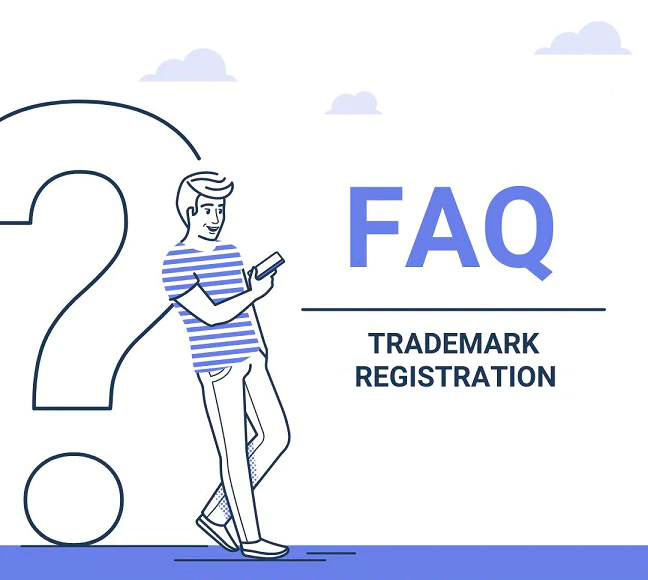Your cart is empty now.

New Trademark Application
Flat Rate Trademarks and a Wealth of Expertise. Specialized Attorneys Who Work with Trademarks Every Day can Help You Now. Probably the #1 Trademark Attorneys.
Before filing a US trademark, it is important to verify whether the same trademark is already in the register. This is called a direct hit search. There are 12 million trademarks in the US Register which results in a lot of collisions.
A direct hit search is included with our trademark application service.

Benefits of using TrademarKraft
Experience, Integrity. We use TEAS PLUS - faster, cheaper!
Most of our trademark applications are prepared using TEAS Plus, which is cheaper and faster ($250 per class rather than $350 per class). Most of our competitors use TEAS Standard which slows your application. If you are eligible for TEAS Plus, we will use it!
Most TEAS Standard applications receive an office action within the first few months. Filing in TEAS Plus avoids this since it correctly classifies the goods so Examiners dont have any questions, resulting in a 4X higher initial approval rate and an average 2 months faster registration.
Federal Trademark Registration FAQs
It depends on the way the application was filed. It usually takes 10 months (269 days at the moment) after filing before an Examining Attorney looks at the file. She may accept the trademark as filed, or issue an office action rejecting the application, requiring clarification or modification of the application. Overall, the majority of trademarks register within about 14 months.
Intent to Use Applications
If the application requires a Statement of Use (filed on 1b intent to use rather than 1a in-use) then there is a delay between the allowance of the mark and the date teh applicant files the Statement of Use, plus the processing time for an Examiner to review. Filing 1b intent-to-use adds on average about 4 months to the application.
Office Actions
Office actions delay the application from the time of notification, to the time a response is filed. There is also a delay before the examiner reviews the response to the office action. The average delay to the application registration time where an office action occurs is about 4 months, and up to a year if the mark is suspended to await the outcome of another trademark application that is cited as similar.
TEAS Standard
TEAS Standard not only has a higher fee of $350 rather than $250, but it takes much longer to register. Usually the Examiner will object to any goods and services that are customized or not specific enough. There is the delay of responding to the office action, and often there is a lot of back and forth to get the goods/services ID right.
It's best to avoid delays since you can only really enforce the trademark once it is registered. That is why it's worthwhile to file TEAS PLUS, with the mark already in-use in commerce.
You can check the current processing wait times to find out how long your trademark filing could take. Filing your initial application, response form, and post registration accurately can speed up the process. You can help by reading these tips on avoiding processing delays.
Check the latest processing times.
The US trademark legal system allows third parties to oppose pending trademark applications.
Opponents can request extensions for good cause, such as investigating claims, conferring with counsel, or seeking representation. Extensions can also be used as a negotiation tactic, allowing for coexistence agreements or new trademark applications. If the opposer files an opposition, the Trademark Trial and Appeal Board (TTAB) will institute an opposition proceeding with a scheduling order. An additional 60-day extension can be requested beyond 120 days from publication, provided the applicant consents or shows extraordinary circumstances.
The truth is, a lot of big companies file extensions of time to oppose to intimidate you.
If a potential opposer has applied for an extension of time, that means they are either discussing whether to oppose your mark, or they want to provide time to negotiate with you, to narrow the mark or ask you to cancel it. Wait until they reach out with a letter and I would advise seeking legal counsel to ensure they actually have a basis to oppose with.
An Office Action is a notice issued by the USPTO to address concerns about a trademark application or potential infringement on another person's mark. It is not a rejection, but rather a response to the application. You only have three months to respond and if you don't respond the trademark will abandon.
Common reasons include a likelihood of confusion under 2d between your trademark and another, or a mark being descriptive or generic with a rejection under 2e.
Office actions can result in denial or suspension of the application, or require minor changes or additional information. If not responded within three months, the application will be abandoned, and all rights and filing fees will be non-recoverable.
Responding to an Office Action requires addressing the examiner's objections, and if a final action is received, compliance with requirements or filing an appeal with the trademark trial and appeal board is required.
You have three months from the Office Action date to file a response with a further 3-month extension possible. However, a skillful response addresses the Examiner's objections without unnecessarily giving away rights. We can help you manage the response, and get through the Examination stage faster. Contact us.
There are a number of advantages for businesses with registered trademarks to using Amazon Brand Registry, but there are some details that need to be made clear regarding the benefits it offers to sellers.
The following are some advantages of using Amazon's Brand Registry:
- Control. Gives you, the brand owner, more authority over the information on your listing.
- Brand surveillance. gives you a tool to keep an eye on your brand on Amazon.
- Dedicated Assistance. a specific internal team for submitting and escalating IP infringement accusations, as well as a different, more effective internal staff to assist with rectifying and resolving inaccurate listing contributions and variants.
- Good content. provides you with access to Amazon A+ Content so you may enhance the information on product listings.
- Stores on Amazon. gives you access to Amazon Stores so you may build a multi-page store to market your business.
- Promoted Content. enhances visibility with cutting-edge advertising techniques like Sponsored Brands and Sponsored Display ads.
- Live on Amazon. enables you to use Amazon Live to webcast and communicate with potential customers.
You can sign up your company for the Amazon Vine Program to receive authenticated product reviews using Amazon Vine.
Conversely, Amazon's Brand Registry won't:
- Prevent other sellers from selling your branded products in resale.
Give you the option to restrict or allow other vendors to sell your brand.
- Give someone else the authority to file infringement complaints against other merchants on your behalf as the brand owner.
Are trademarks required for Amazon's Brand Registry?
You must have a registered trademark for your product in order to apply for the Brand Registry program. This requires that your trademark be registered with the USPTO (United States Patent and Trademark Office).
How can I register my trademark?
You must perform the following actions in order to start the process:
- Do research. Once you've chosen a name and/or logo, make sure it is original and that no other companies are using the same name as a registered trademark. By conducting a thorough search in their official database on the USPTO website, confirm this.
- File your trademark application in a chosen class. Similar to choosing a product category on Amazon, this will specify the kinds of goods that go under your registered brand. The trademark's price will vary according to its class.
Use a trademark lawyer with a license. They or we can submit an application for your trademark.
How much time does it take to register a trademark?
In most cases, you can anticipate having to wait at least a year for the USPTO to respond.
Fortunately, getting your brand certified by Amazon doesn't take a year.
The IP Accelerator is a tool provided by Amazon that links Amazon business owners with its own preferred/vetted intellectual property (IP) lawyers who can assist you with the trademark application process.
Before your trademark application is approved, Amazon will accept your product for the Brand Registry.
How long does it take to get approved for the Amazon Brand Registry?
The complete approval procedure should take roughly two weeks, presuming you already have a trademark or have submitted a request through the IP Accelerator program. Just be sure to submit all the information Amazon requires for your brand the first time.
As you evaluate the eligibility requirements, keep in mind that your brand must have a registered trademark that is currently in use in each of the countries where you wish to enroll.
No, don't be afraid of the process - we can guide you through for less than you think.
The opposition process is used by other marks, particular famous one, to scare you into abandoning your trademark. But often they do not have strong grounds to oppose. If they have some grounds, an amendment of your trademark may be effective in addressing it. For example, the goods/services can be amended to avoid those in the other mark, or the channels of trade may be limited to avoid those channels used by the other mark.
Contact us for a free assessment.
Latest Blog























